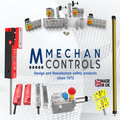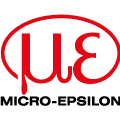
Posted to News on 23rd Oct 2007, 19:17
Laser sintering produces customied and optimised robot grippers
ASS Maschinenbau is using rapid manufacturing technologies to produce customised and optimised robot end effectors in plastic and metals.
Laser-sintering opens up new opportunities for the production of robot hands. Since the beginning of 2007, ASS Maschinenbau has been using an EOSINT P 390 for plastic laser-sintering. The company, a daughter of Indus Holding AG, produces compact, complex and ultra lightweight robot end-of-arm tooling (EOAT). At the same time, ASS integrates functions in the gripping technology and, consequently, enlarges the application spectrum of its products.
Marc Schwope, managing director of ASS Maschinenbau, states: "With laser sintering we manufacture ultra-lightweight and compact gripping elements individually, fast and cost-effectively. The components complement our range of products for various applications in the plastics industry."
Three times a week an application specialist from ASS starts up the e-manufacturing process. Up to 100 different parts are built in one single production cycle – and they are used for various purposes. Those can be laser-sintered robot grippers, but also combinations with aluminium and steel shafts.
ASS has provided robot hand kits to its customers for more than 25 years. In the past, the components of the kits were produced by turning and milling. For some parts at least, laser-sintering now replaces those traditional methods.
Built-in functions
An important aspect for ASS is the freedom of design that laser-sintering offers as a layer-manufacturing technology. Schwope explains: "With the technology, we can combine a lot of functions within very limited space, in particular for removal tasks. For example, hoses within the hand have become oblivious. Laser-sintering enables us to directly integrate cross-section optimised air ducts and vacuum channels. We therefore save time and costs."
A special designated department with three employees at ASS ensure that the product design is optimised and that the geometrical freedom of the laser-sintering technology is fully exploited. The company therefore manufactures robot grippers that could not be produced with conventional manufacturing technologies due to the size of the standard components or their complex designs.
Want the latest machine building news straight to your inbox? Become a MachineBuilding member for free today >>

















